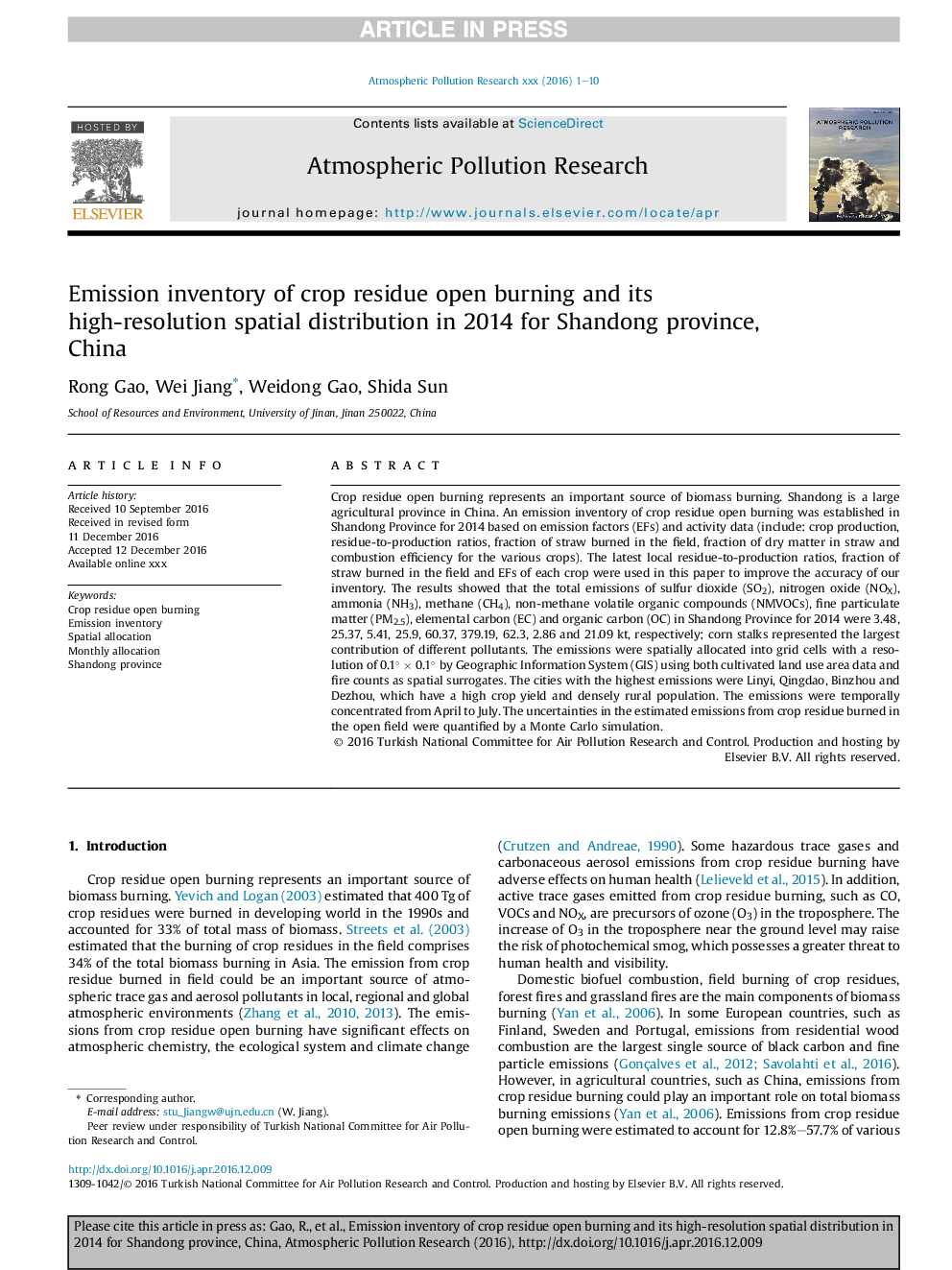| Article ID | Journal | Published Year | Pages | File Type |
|---|---|---|---|---|
| 8862763 | Atmospheric Pollution Research | 2017 | 10 Pages |
Abstract
Crop residue open burning represents an important source of biomass burning. Shandong is a large agricultural province in China. An emission inventory of crop residue open burning was established in Shandong Province for 2014 based on emission factors (EFs) and activity data (include: crop production, residue-to-production ratios, fraction of straw burned in the field, fraction of dry matter in straw and combustion efficiency for the various crops). The latest local residue-to-production ratios, fraction of straw burned in the field and EFs of each crop were used in this paper to improve the accuracy of our inventory. The results showed that the total emissions of sulfur dioxide (SO2), nitrogen oxide (NOX), ammonia (NH3), methane (CH4), non-methane volatile organic compounds (NMVOCs), fine particulate matter (PM2.5), elemental carbon (EC) and organic carbon (OC) in Shandong Province for 2014 were 3.48, 25.37, 5.41, 25.9, 60.37, 379.19, 62.3, 2.86 and 21.09 kt, respectively; corn stalks represented the largest contribution of different pollutants. The emissions were spatially allocated into grid cells with a resolution of 0.1° Ã 0.1° by Geographic Information System (GIS) using both cultivated land use area data and fire counts as spatial surrogates. The cities with the highest emissions were Linyi, Qingdao, Binzhou and Dezhou, which have a high crop yield and densely rural population. The emissions were temporally concentrated from April to July. The uncertainties in the estimated emissions from crop residue burned in the open field were quantified by a Monte Carlo simulation.
Related Topics
Physical Sciences and Engineering
Earth and Planetary Sciences
Atmospheric Science
Authors
Rong Gao, Wei Jiang, Weidong Gao, Shida Sun,
